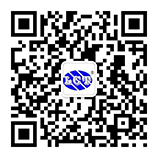Load Cell Usage
Notes on the application of weighing sensors
A weighing sensor is actually a device that converts a quality signal into a measurable electrical signal output, and is widely used in weighing devices to ensure their normal operation, which is related to the accuracy, safety, and reliability of the weighing device. What issues should we pay attention to when applying weighing sensors?
1. Pay attention to the usage environment. High temperature, dust, humidity, and highly corrosive environments, as well as electromagnetic fields, can cause serious damage to weighing sensors and have an impact. Therefore, it is important to pay attention to the usage environment of the weighing sensor, or choose the corresponding weighing sensor in the established environment.
2. Prevent debris from contaminating the sensor, so as not to affect the movement and accuracy of the movable parts. You can set up some "baffles" around the weighing sensor or cover the sensor with a thin metal plate.
3. Circuit connection. The wires leading to or from the display circuit should be shielded cables, and the output signal readout circuit of the sensor should not be placed together with some devices that can generate interference and high heat.
4. To avoid damage caused by welding current or lightning strikes, sensors should use hinged copper wires (with a cross-sectional area of approximately 50mm2) to form an electrical bypass, while avoiding strong thermal radiation.
5. Electrical connections. The signal cable of the sensor cannot be arranged in parallel with the high-voltage power line or control line.
6. Prevent certain lateral forces from acting on the sensor. Structural accessories with automatic positioning or resetting function, such as spherical bearings, joint bearings, positioning fasteners, etc., can be used.
7. Weighing sensors should be handled with care to prevent any impact, drop, etc. The base of the sensor installed at the same time should be flat, clean, with sufficient strength and rigidity, and free of any oil film, adhesive film, etc.
8. To avoid damage to the weighing sensor caused by overloading, even if the weighing sensor has a certain overload capacity.
9. The power and control wires should be twisted together to a degree of 50 revolutions per meter. If the sensor signal wire needs to be extended, a specially sealed cable junction box should be used. If the signal cable is very long, a cable compensation circuit with a relay amplifier should be considered.
10. To ensure the accuracy of weighing, the installation plane of a single sensor mounting base should be adjusted horizontally with a spirit level. In order to ensure that the load borne by each sensor is basically consistent, the installation surface of multiple sensor mounting bases should be adjusted to a horizontal plane as much as possible.
Selection of Range
The closer the weighing value of the weighing system is to the rated capacity of the sensor, the higher its weighing accuracy. However, in practical use, due to the existence of self weight, tare weight, vibration, impact, and unbalanced load of the scale body, there are significant differences in the principles of selecting sensor limits for different weighing systems. As a general rule, there can be: * Single sensor static weighing system: Fixed load (weighing platform, container, etc.)+Variable load (load to be weighed) ≤ Rated load of selected sensor X 70% * Multi sensor static weighing system: Fixed load (weighing platform, container, etc.)+Variable load (load to be weighed) ≤ Rated load of selected sensor X Number of equipped sensors X 70%, where 70% of the coefficient is to consider vibration, impact Due to factors such as partial loading.
It should be noted that first of all, the rated capacity of the sensor should be selected to meet the values in the manufacturer's standard product series as much as possible. Otherwise, using non-standard products will not only be expensive, but also difficult to replace after damage. Secondly, in the same weighing system, it is not allowed to use sensors with different rated capacities, otherwise the system will not function properly. Furthermore, the so-called variable load (load to be weighed) refers to the actual load applied to the sensor. If there is a mechanism (such as a lever system) that multiplies and attenuates the force value during the transmission process from the weighing platform to the sensor, its impact should be considered.
Accuracy selection
The selection of the accuracy level of the weighing sensor should meet the requirements of the weighing system's accuracy level, as long as it can meet this requirement. If a 2500 degree sensor can meet the requirements, do not choose a 3000 degree sensor. If several sensors of the same form and rated capacity are used in parallel in a weighing system, the comprehensive error is Δ, There are: Δ=Δ/ N1/2 (2-12)
Among them: Δ: The comprehensive error of a single sensor; n: The number of sensors. In addition, electronic weighing systems generally consist of three main components: weighing sensors, weighing displays, and mechanical structural components. When the tolerance of the system is 1, the comprehensive error of the weighing sensor, which is one of the main components of the non automatic weighing system, is affected( Δ) Generally, the proportion of components can only reach 0.7. Based on this point and equation (2-12), it is not difficult to make a choice about the required sensor accuracy.







